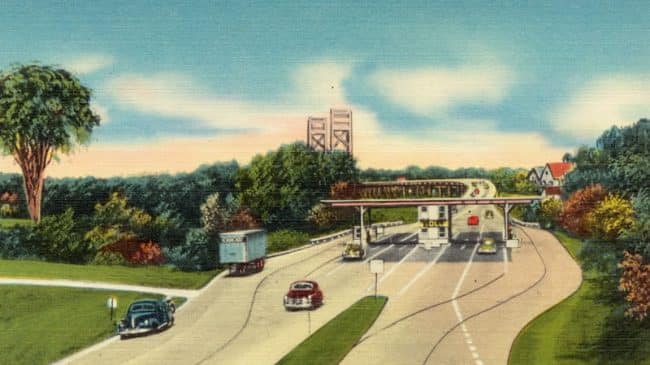Rising traffic congestion is an increasing irritant in mid-sized regions with urbanized area populations between 200,000 and 1 million persons. Along with jobs, education and crime, traffic congestion regularly ranks as a top priority in local opinion surveys. While congestion is increasing more rapidly in mid-sized regions than in large regions, it is more easily solvable in the former than in the latter.
This report assesses how effectively the transportation plans of 26 mid-sized regions deal with congestion. It reviews traffic forecasts against plans for improvements by quantifying how much congestion relief each plan contains. Then, it determines the potential for congestion relief contained in the plans by reviewing each proposed project for cost and effectiveness. Finally, the report offers practical suggestions for each region.
The study finds that the 26 regions measure congestion differently, making direct comparisons difficult. However, the plans predict, on average, about a 44% increase in population and a 56% increase in traffic over the next several decades. Most of this forecasted growth will be in the suburbs. Worsening congestion is caused more by population growth and limited road capacity than by unnecessary travel. Average commuter delay will double and total regional commuting delay will increase three-fold. Currently, only about 2% of commuters use transit and the mode share is predicted to remain at that level, so even large increases in transit use would have a limited effect on congestion.
On average, the regions plan to spend about $927 million in short range (4+ year) transportation improvements. Of this, transit spending will average about $119 million, or about 13%. The most common major initiatives in the short range plans are Interstate maintenance and arterial resurfacings, but some mid-sized regions have major transit initiatives. Long range plans will spend about $5.157 B over 20 to 25 years, including approximately 18% on transit. And these costs do not include inflation. The per-commuter expenditure for transit riders is about nine times higher than the per-commuter expenditure for solo drivers in short range plans and 12 times higher in long range plans. Most plans are unbalanced modally and most are fiscally unrealistic, with uncertain or insufficient funding. But even with these expenditures, all 26 regions report that congestion will be worse after expenditures. Most plans do not make congestion relief a major goal. Instead, congestion management plans concentrate on congestion measurement rather than congestion relief. Few plans report the impact of planned actions on congestion. Regardless of congestion, air quality will improve due largely to fleet turnover; transportation systems improvements will have very little effect.
The plans have the potential to significantly impact congestion, if funds are targeted to congestion-relieving projects. The 26 regions together contain about 4,648 projects that affect congestion, in total costing about $85.4 B, slightly more than half of their budgets. If implemented, these projects would save commuters about 438,000 hours daily compared with doing nothing. Over 90% of the savings comes from new freeways, new arterials and freeway/arterial widenings. But the most cost-effective projects, in terms of cost per hour of time saved, are building one-way street pairs, widening urban arterials and using signal optimization, all of which cost less than $5-6 per hour of time saved. The overall benefits of these congestion-relieving projects, in user savings and regional productivity, are about two times their cost.
Regardless, most plans do not adequately address increases in congestion. Only five of the 26 regions have realistic plans for their projected growth. Only four have plans that sufficiently reduce delay to hold congestion at current levels. Typically, these are slower-growing regions that have fewer than 300,000 persons. Seven other regions, with populations of between 300,000 and 600,000, come close to keeping congestion at current levels; with the recent slowdown in traffic growth, this group may be able to maintain or reduce delay. On the other hand, most regions with more than 600,000 persons probably will not have enough delay reduction in their plans to hold congestion at current levels. They seem to have systemic deficits between the contents of their plans and projected congestion increases, and either do not have enough fiscal resources or are directing them in such as way as to make increased congestion highly likely, in spite of their plans. Finally, a few regions have structurally deficient plans that contain such a distorted view of trends that they are likely to experience sharp increases in congestion.
The report concludes that the rising congestion is not inevitable for mid-sized regions and can be rolled back with concerted action. The report provides suggestions for regions, the states and the federal government. Overall, it calls for mid-sized regions to refocus their transportation plans and aggressively address rising congestion before it threatens their economic health.
Note: Most of the data in this report predates the Great Recession of 2008-09 and the ensuing economic slowdown. These events mean that the specifics of the report for individual regions should be updated with recent forecasts and plans. If revised, the report would likely show slower projected growth and possibly lower costs for planned projects, but also fewer fiscal resources. The key “cutoff” region size above which congestion reduction is extremely difficult increases from approximately 600,000 residents to approximately 800,000. As a result, more regions than before-those with fewer than 800,000 residents-can reduce congestion even as traffic grows if they act aggressively to implement cost-effective projects in a timely fashion.


